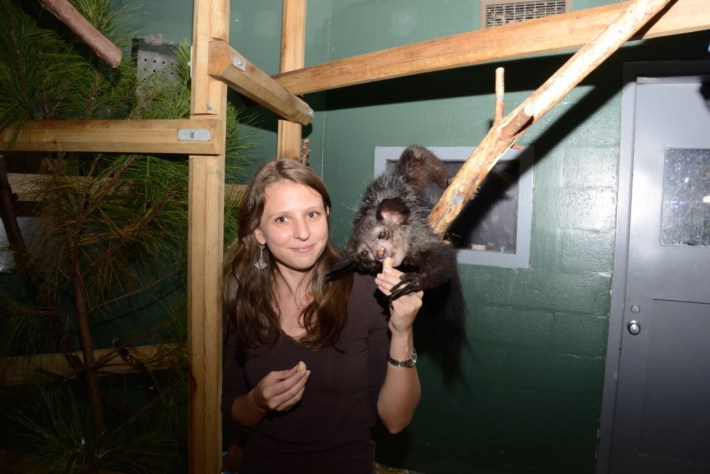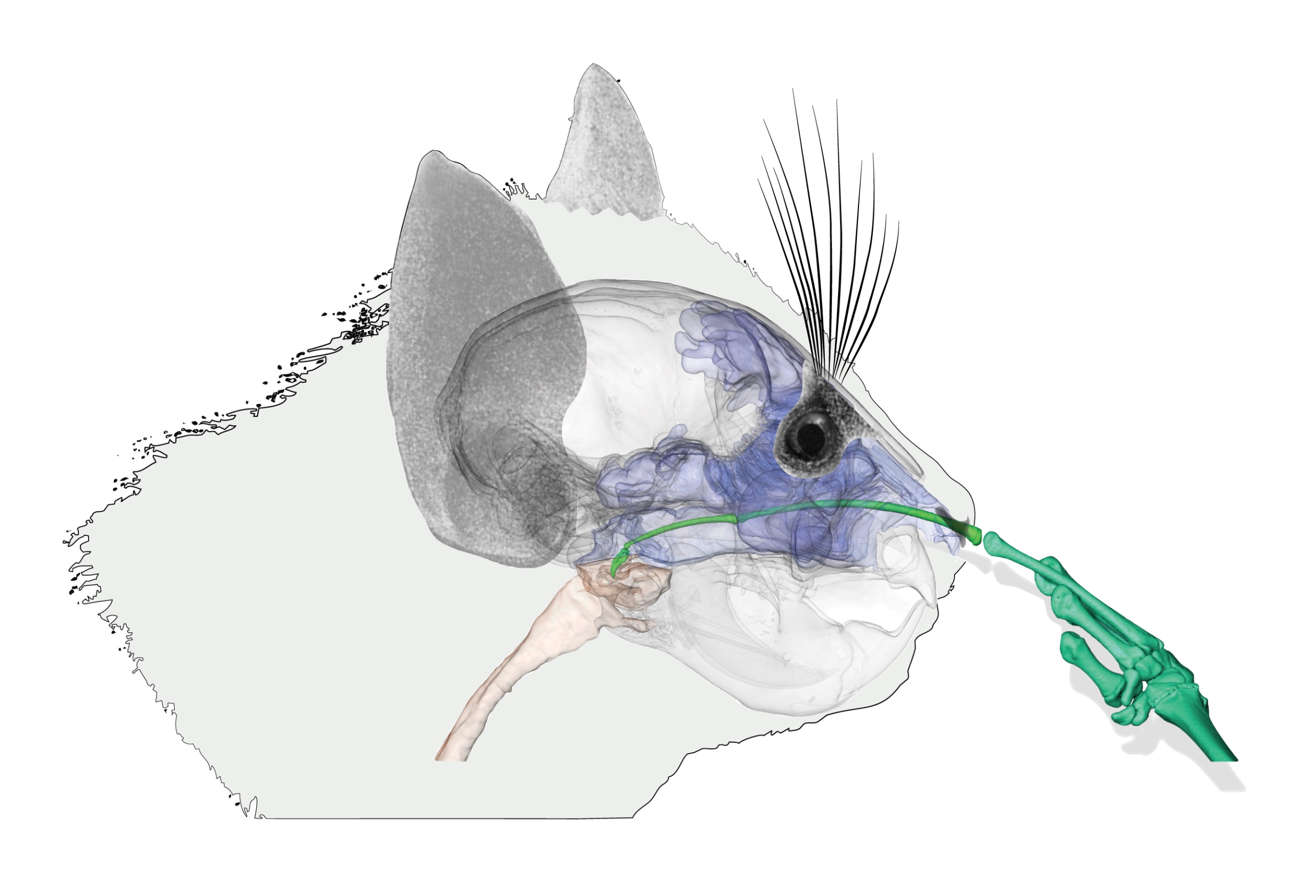Under the dim light of the Duke Lemur Center in Durham, N.C., Anne-Claire Fabre filmed an aye-aye named Kali eat with her hands. Fabre, an assistant professor at the University of Berne and a scientific associate of London’s Natural History Museum, had come to the center to study the evolution of grasping behavior in primates, and aye-ayes—which are nocturnal primates with enormous ears and a grizzled coat—certainly have a unique style of grasping. They have six fingers: three regular ones, one pseudo-thumb, and two elongated, almost skeletal middle and ring fingers.
At some point, Kali stopped eating. She extended her long and skinny middle finger and began inserting it into her nose, pushing it deeper and deeper. "It was quite impressive to see," Fabre said. "It's fascinating that such a long finger can go so deep." Soon after Kali had put her entire finger inside her nasal cavity, she made her intentions clear with a determined lick. "The animal was eating its snot," Fabre said. "I was able to see it perfectly."
(Warning: Video contains nose-picking.)
To Fabre, Kali's ability to insert all 3 inches of her longest finger inside her small skull raised some anatomical questions. "You have the feeling that it's going into its brain, basically, but it's not the case," Fabre said. When she left the room, Fabre asked some of her colleagues at the center if they'd ever seen an aye-aye picking their nose before. Some hadn't. Others had, but they never captured it on film. Fabre wanted to know where, exactly, the finger was going. Fabre and her colleagues' subsequent investigation into the aye-aye's penchant for rhinotillexis, or nose picking, was published Wednesday in the Journal of Zoology.
The researchers obtained a CT scan of an aye-aye specimen from a museum and then digitally created a model of the head and hand to understand just how deep the finger could go. (The researchers smartly did not attempt to scan an aye-aye in the act of picking.) The scans revealed the finger extending through the entire nasal passage and then descending into the pharynx at the back of the mouth, like an apocalyptic COVID test. Speaking personally, the resulting look horrifying—a finger boldly going where no finger has gone before or should go in the future. Yet the act does not seem to harm the aye-aye; Fabre said she believes that the veterinarians at the lemur center would have noticed if the primates had some kind infection or irritation around their noses.
An aye-aye's middle finger is a strange and remarkable tool. It sits on a ball-and-socket joint that enables it to swivel in any direction, similar to the human shoulder. Aye-ayes rely on their spindly fingers to forage for food in a strategy called "percussive foraging." The primates tap their long fingers on trees and listen for the echoes of hollow areas. Then they gnaw into the bark, unfurl their longest finger, insert it into the tree, and hook grubs and other larvae with a specialized claw, Jason Bittel wrote in Pacific Standard.

Although the long finger has clear benefits for food, it's not as clear what the aye-aye gains from its mucus. The researchers surveyed the scientific literature around nose-picking and found the pickings relatively slim. "There are so few studies about it," Fabre said. And many of these studies focus on humans, with some coming to the conclusion that many people pick their nose but are ashamed to admit it. In the book Consuming the Inedible, one chapter titled "Eating snot. Socially unacceptable but common: Why?" suggested that humans pick their noses due to the texture, crunchiness, and saltiness of the snot—characteristics we favor.
But humans are not alone. The authors of the new paper surveyed scientific literature and found 11 primate species, including humans, macaques, and orangutans, pick their noses, and many rely on tools like twigs to complete the task; the aye-aye rounds this number out to 12. Although nose-picking might requires fine manipulative skills, eating snot is more democratic. For example, giraffes eat their nasal mucus by directly swirling their tongues around their nostrils—no middle finger required.

Kali was born in captivity, the daughter of Endora the aye-aye and Nosferatu the aye-aye, both of whom were born in the wild. Aye-ayes are only found in Madagascar, where they are endangered due to habitat loss. No one has observed wild aye-ayes picking their noses, and there is a possibility that captive aye-ayes, like Kali, display unusual behaviors. But the researchers emphasized that this nose-picking could certainly exist in the wild and might even have a function that researchers have yet to understand. They conclude the study with a call for more comparative studies on nose-picking and mucus-eating across primates and the vertebrate kingdom to shed more light on a behavior we might dismiss as gross or repugnant. To those who would say nay, nay to the exploits of her finger, Kali responds with a stubborn aye, aye.







